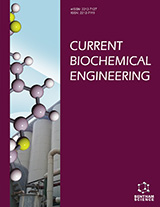Abstract
Background: Plastics are widely used in almost every manufacturing industry ranging from automobiles to medicine. Plastics take years to get degrade and have become a threat to the environment. Therefore there is a necessity to use biodegradable plastics in place of such nonbiodegradable plastics. Polyhydroxybutyrate or PHB is a type of biopolymer which has similar properties to that of synthetic plastics and is susceptible to degradation by microbes in the environment itself. PHB is produced in microorganisms such as bacteria or yeast under stress conditions. As the yeast has a large cell size, it can accumulate more PHB than bacteria and is also physiologically flexible, in addition to the advantage of using yeast rather than the bacterial cell for the production of PHB. Therefore, the aim of the study was to isolate PHB producing yeast strain from the agricultural field.
Methods: Primary screening of isolates was performed using Sudan Black B for PHB production. The extraction of PHB was done using sodium hypochlorite digestion method. The quantification of extracted PHB was done by UV-VIS spectroscopy.
Results: The percentage and amount of PHB extracted were found to be 13.4 % per biomass and 1.6mg/ml, respectively.
Conclusion: A quite amount of PHB was able to be extracted from yeast isolate. As a future perspective, the enhancement of PHB production can be done using agricultural residues like sugarcane bagasse, corn cob, teff, banana peel, etc.
Keywords: Polyhydroxybutyrate, yeast isolates, Sudan black B staining, extraction, quantification, UV-VIS spectroscopy.
Graphical Abstract
 4
4
















